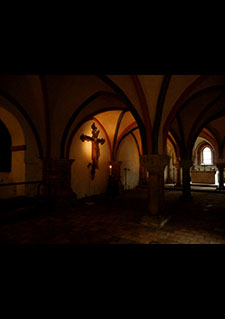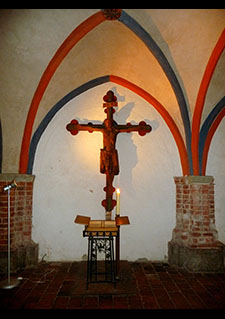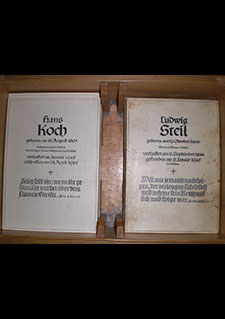Martyrs’ Memorial in Brandenburg Cathedral
The crypt of the Gothic cathedral in Brandenburg an der Havel has been a “Memorial Center for the Martyrs of the Church Struggle” since 1953. Cathedral dean Albrecht Schönherr, a student of Bonhoeffer’s, began pursuing the idea of such a dedication in 1949.
He took inspiration from the book und folget ihrem Glauben nach published in 1948, which Bernhard Heinrich Forck, a theologian at the University of Hamburg, had compiled at the behest of the Evangelical Church in Germany. Forck’s book contained the biographies of eighteen men and women killed by the Nazis during the course of the church struggle.
Forck selected the category of interpretation of the martyr to recognize these dead. Since its infancy, the church labeled individuals who sacrificed their lives for Christ’s sake martyrs. The concept of martyrdom was applied increasingly from 1945 onward to Christian victims of National Socialism.
The Martyrs Memorial Center in Brandenburg took up this idea. A shrine-like chest with the names of nineteen people killed for their Christian resistance under the Nazi regime stands before a medieval Crucifix. Schönherr decided to use the names from Forck’s book for the time being and intended to expand it later.
Only one single name is not to be found in the original book: Hermann Stöhr. This was the first time that a conscientious objector was memorialized as a martyr publicly in the church. Noteworthy was also that Stöhr had not been a member of the Confessing Church in the narrower sense. Instead, an individual Christian who had followed his conscience was honored, thus foreshadowing an expansion of the concept of martyrdom.
Source / title
- ©Photos: 1: Foto-Schweitzer 1953; Domarchiv Brandenburg BDS B 2477 A5: 2 und 3: Tim Lorentzen 2010; 4: Siegfried Hermle




